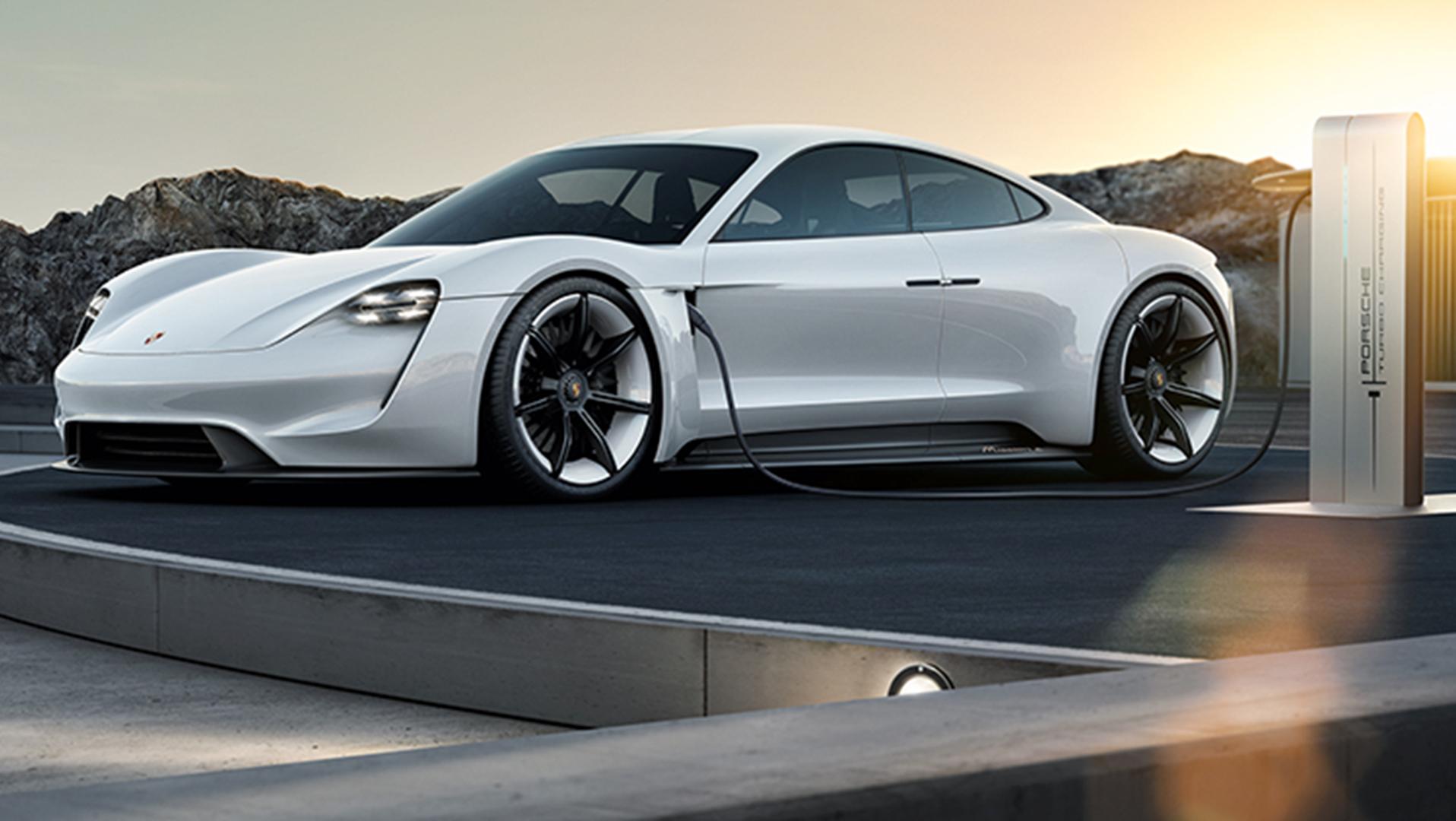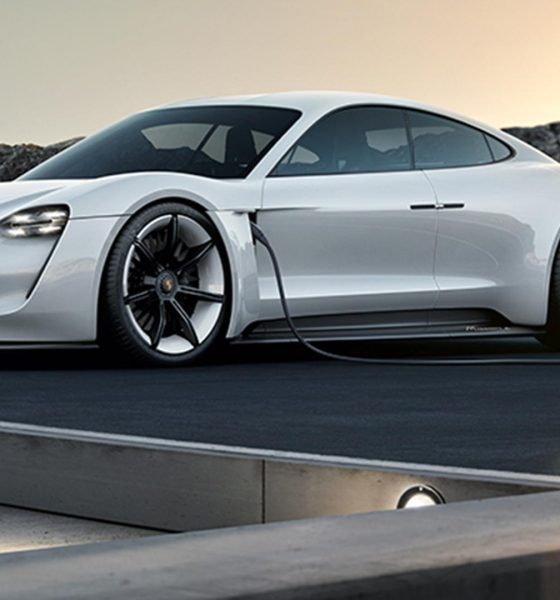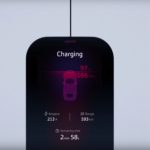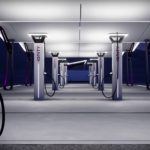

News
Porsche will install 500 fast chargers in USA ahead of Mission E rollout
Porsche Cars North America has announced that it will be building a network of 500 fast chargers in the United States ahead of the upcoming all-electric Mission E rollout in 2019.
Porsche’s Mission E sedan, an electric car comparable to the Tesla Model S, is expected to reach American dealerships sometime next year, followed by the release of the Mission E Cross Turismo in 2020. Apart from these two vehicles, the German legacy carmaker is also considering the electrification of some of its most iconic brands, such as the Macan, Panamera, and the Cayenne.
In a statement to Automotive News, Porsche Cars of North America CEO Klaus Zellmer stated that the 800-volt fast chargers are designed to address the needs of Mission E owners in the region. According to the CEO, the fast charging network will aid in alleviating any range anxiety that owners of the all-electric Porsches might feel when traveling over long distances.
“If you want to buy that car, you want to know what happens if I go skiing and go further than 300 miles. What do I do? So we need to have answers for that,” Zellmer said.
Zellmer noted further that there’s a good chance that the fast chargers will only be used by Mission E owners who travel beyond the vehicle’s 301-mile range. According to the executive, around 80-90% of Mission E owners will likely charge their cars at home or at while at work.
If there is one thing that Zellmer is certain of, however, it is that the 500 fast chargers across the United States will not be free of charge, unlike Tesla’s Supercharger network, which is free to use for owners of the Model S and Model X. The Porsche Cars North America executive further stated that there would be several payment options for Mission E owners, though nothing is finalized yet at this time.
“We are pretty certain that it’s not free of charge. It’s too early to talk about how exactly that payment process for customers will work. There are various opportunities. You could buy a package all included for the car. It could be a membership card that you use. We’re not quite there yet,” the executive said.
- A concept of the IONITY charging network.
Zellmer also told the publication that Porsche dealers in the United States could opt to build free fast-charging stations for their customers as a means to draw more traffic. The charging time for the vehicle, after all, could be a window of opportunity to engage with customers in dealership offerings. Zellmer, however, noted that dealerships who are interested in this option would have to invest in the construction of the charging stations.
“Dealership investment is not yet finalized, but it’s not a minor cost. It certainly is six-digit numbers that our dealers will have to take,” he said.
Apart from its fast-charging network in the United States, Porsche is also taking part in the construction of the Tesla Supercharger-rivalling IONITY network in Europe. Created by the Volkswagen Group, BMW Group, Daimler AG, and the Ford Motor Company, IONITY exceeds Tesla’s 120 kW Superchargers with its estimated 350 kW output, which is expected to give the Mission E up to 248 miles of range in as little as 15 minutes.
Just like the American fast chargers, using the IONITY network will not be free of charge. According to Porsche’s deputy chairman of the executive board Lutz Meschke, the rates for the upcoming ultra-fast charging network will be comparable to the current prices of gasoline.

News
Elon Musk’s Grokipedia surges to 5.6M articles, almost 79% of English Wikipedia
The explosive growth marks a major milestone for the AI-powered online encyclopedia, which was launched by Elon Musk’s xAI just months ago.

Elon Musk’s Grokipedia has grown to an impressive 5,615,201 articles as of today, closing in on 79% of the English Wikipedia’s current total of 7,119,376 articles.
The explosive growth marks a major milestone for the AI-powered online encyclopedia, which was launched by Elon Musk’s xAI just months ago. Needless to say, it would only be a matter of time before Grokipedia exceeds English Wikipedia in sheer volume.
Grokipedia’s rapid growth
xAI’s vision for Grokipedia emphasizes neutrality, while Grok’s reasoning capabilities allow for fast drafting and fact-checking. When Elon Musk announced the initiative in late September 2025, he noted that Grokipedia would be an improvement to Wikipedia because it would be designed to avoid bias.
At the time, Musk noted that Grokipedia “is a necessary step towards the xAI goal of understanding the Universe.”
Grokipedia was launched in late October, and while xAI was careful to list it only as Version 0.1 at the time, the online encyclopedia immediately earned praise. Wikipedia co-founder Larry Sanger highlighted the project’s innovative approach, noting how it leverages AI to fill knowledge gaps and enable rapid updates. Netizens also observed how Grokipedia tends to present articles in a more objective manner compared to Wikipedia, which is edited by humans.
Elon Musk’s ambitious plans
With 5,615,201 total articles, Grokipedia has now grown to almost 79% of English Wikipedia’s article base. This is incredibly quick, though Grokipedia remains text-only for now. xAI, for its part, has now updated the online encyclopedia’s iteration to v0.2.
Elon Musk has shared bold ideas for Grokipedia, including sending a record of the entire knowledge base to space as part of xAI’s mission to preserve and expand human understanding. At some point, Musk stated that Grokipedia will be renamed to Encyclopedia Galactica, and it will be sent to the cosmos.
“When Grokipedia is good enough (long way to go), we will change the name to Encyclopedia Galactica. It will be an open source distillation of all knowledge, including audio, images and video. Join xAI to help build the sci-fi version of the Library of Alexandria!” Musk wrote, adding in a later post that “Copies will be etched in stone and sent to the Moon, Mars and beyond. This time, it will not be lost.”
News
Tesla Model 3 becomes Netherlands’ best-selling used EV in 2025
More than one in ten second-hand electric cars sold in the country last year was a Tesla Model 3.

The Tesla Model 3 became the most popular used electric car in the Netherlands in 2025, cementing its dominance well beyond the country’s new-car market.
After years at the top of Dutch EV sales charts, the Model 3 now leads the country’s second-hand EV market by a wide margin, as record used-car purchases pushed electric vehicles further into the mainstream.
Model 3 takes a commanding lead
The Netherlands recorded more than 2.1 million used car sales last year, the highest level on record. Of those, roughly 4.8%, or about 102,000 vehicles, were electric. Within that growing segment, the Tesla Model 3 stood far ahead of its competitors.
In 2025 alone, 11,338 used Model 3s changed hands, giving the car an 11.1% share of the country’s entire used EV market. That means more than one in ten second-hand electric cars sold in the country last year was a Tesla Model 3, Auto Week Netherlands reported. The scale of its lead is striking: the gap between the Model 3 and the second-place finisher, the Volkswagen ID3, is more than 6,700 vehicles.
Rivals trail as residual values shape rankings
The Volkswagen ID.3 ranked a distant second, with 4,595 used units sold and a 4.5% market share. Close behind was the Audi e-tron, which placed third with 4,236 registrations. As noted by Auto Week Netherlands, relatively low residual values likely boosted the e-tron’s appeal in the used market, despite its higher original price.
Other strong performers included the Kia Niro, the Tesla Model Y, and the Hyundai Kona, highlighting continued demand for compact and midsize electric vehicles with proven range and reliability. No other model, however, came close to matching the Model 3’s scale or market presence.
News
Tesla Model Y Standard Long Range RWD launches in Europe
The update was announced by Tesla Europe & Middle East in a post on its official social media account on X.

Tesla has expanded the Model Y lineup in Europe with the introduction of the Standard Long Range RWD variant, which offers an impressive 657 km of WLTP range.
The update was announced by Tesla Europe & Middle East in a post on its official social media account on X.
Model Y Standard Long Range RWD Details
Tesla Europe & Middle East highlighted some of the Model Y Standard Long Range RWD’s most notable specs, from its 657 km of WLTP range to its 2,118 liters of cargo volume. More importantly, Tesla also noted that the newly released variant only consumes 12.7 kWh per 100 km, making it the most efficient Model Y to date.
The Model Y Standard provides a lower entry point for consumers who wish to enter the Tesla ecosystem at the lowest possible price. While the Model 3 Standard is still more affordable, some consumers might prefer the Model Y Standard due to its larger size and crossover form factor. The fact that the Model Y Standard is equipped with Tesla’s AI4 computer also makes it ready for FSD’s eventual rollout to the region.
Top Gear’s Model Y Standard review
Top Gear‘s recent review of the Tesla Model Y Standard highlighted some of the vehicle’s most notable features, such as its impressive real-world range, stellar infotainment system, and spacious interior. As per the publication, the Model Y Standard still retains a lot of what makes Tesla’s vehicles well-rounded, even if it’s been equipped with a simplified interior.
Top Gear compared the Model Y Standard to its rivals in the same segment. “The introduction of the Standard trim brings the Model Y in line with the entry price of most of its closest competition. In fact, it’s actually cheaper than a Peugeot e-3008 and costs £5k less than an entry-level Audi Q4 e-tron. It also makes the Ford Mustang Mach-E look a little short with its higher entry price and worse range,” the publication wrote.










